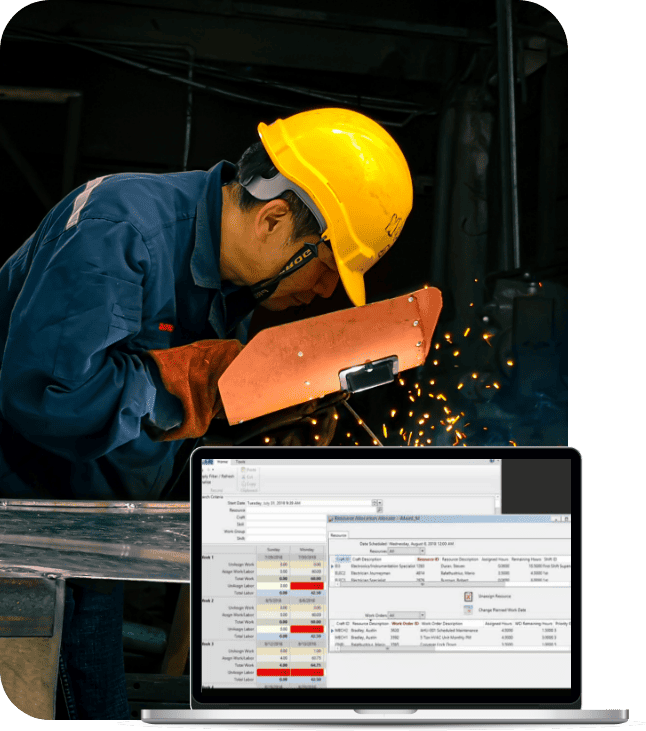5 Ways to Make Your Equipment Last Longer with Preventive Maintenance Software
Want to boost equipment efficiency and cut costs? Learn five…
Text goes here and is here for the text.Usually3 lines of text.
Text goes here and is here for the text.Usually3 lines of text.
Text goes here and is here for the text.Usually3 lines of text.
Text goes here and is here for the text.Usually3 lines of text.
Text goes here and is here for the text.Usually3 lines of text.
Text goes here and is here for the text.Usually3 lines of text.
Text goes here and is here for the text.Usually3 lines of text.
Text goes here and is here for the text.Usually3 lines of text.
Text goes here and is here for the text.Usually3 lines of text.


Preventive maintenance takes place before an asset or piece of equipment breaks down. It is the opposite of reactive maintenance, which takes place only after a piece of equipment breaks down. PM tasks can be carried out out predetermined intervals, such as a time period or meter count. A preventive maintenance strategy aids in minimizing unplanned downtime and repair costs.
The overall goal is to extend the life and reliability of assets, but this process is far too complex to maintain manually for most organizations. A computerized maintenance management system (CMMS) solution allows organizations to effectively carry out PM strategies.
CMMS software enables users to store and quickly access important asset information. Examples include equipment status, history, manufacturer-recommended guidelines, spare parts, processes and more. Using the software, maintenance departments can schedule and assign PM tasks in advance, taking into account slow times for the business.

Cloud-Hosted and On-Premise Solutions Available
Mobile Access, Dashboard & Integration Options
Condition Monitoring & GPS Tracking Capabilities
CMMS systems typically include a work order management system that records and tracks all work orders. Work orders are the backbone of your maintenance operations, so any CMMS system should enable you to handle a heavy flow of work orders with ease.
A work order management system allows you to assign employees and job procedures to work orders and captures labor, parts, and material costs. You can also use a work order system to track job time, response time, equipment downtime, equipment history, and more. Work orders can also have linked drawings, pictures, documents, video clips and other files to allow for the accurate information to be available at all times, for all technicians.

The reporting module of a CMMS system enables you to generate meaningful and easy-to-understand reports, helping you to spot trends, identify opportunities for improvement and make empowered critical business decisions. You can use reports to monitor many areas, including equipment performance, work order completion, employee productivity and material usage. A CMMS will typically provide you with ready-to-run reports as well as give you the ability to create customized reports.
Today’s maintenance workforce needs to be able to access data and information about their assets remotely. Many CMMS vendors offer web-based maintenance software allowing users to access maintenance data via a web browser, so they can log into the system when they are on the road or away from the office.
Gain control of spare parts, equipment, and tools for efficient management, reducing searches and unplanned downtime. Many inventory management modules are underutilized, making every maintenance task more time-consuming than necessary. Spend less time locating spare parts with an effective inventory management system that tracks and manages inventory at multiple sites.
The assets module of preventive maintenance software eliminates the need for costly and time-consuming manual tracking processes. You can use the assets module to enter information about each of your assets, including all associated parts and procedures, warranties, codes, meter readings, and more.
Prior to purchasing preventive maintenance software, assess your needs and then learn about the features and functions of the systems you’re considering. Your organization is constantly evolving, so it’s also important to select flexible, customizable CMMS software that allows you to adapt to these changes.

Maintaining equipment through preventive maintenance extends its lifecycle and eliminates the premature replacement of parts and equipment. Generating and managing PMs – preventive maintenance tasks – allows technicians to accurately follow manufacturers’ guidelines for equipment maintenance. To determine the monetary value of a CMMS system, you can estimate the number of years you expect to extend your equipment’s lifecycle through automated preventive maintenance. Compare this with the total purchase cost of the equipment and you can come up with a tangible dollar amount.
Proper maintenance prevents breakdowns and associated downtime. Using preventive maintenance software to schedule and track preventive maintenance tasks, you can reduce unexpected breakdowns and emergency maintenance issues, thus keeping equipment up and running efficiently providing a huge impact on your organization’s overall productivity and effectiveness.
A well-executed preventive maintenance program leads to a decrease in unplanned repairs, while also providing quick and easy access to equipment history, manufacturer information, specs, and warranty information. With such accurate and detailed information, maintenance technicians can handle repairs quickly. Furthermore, routine repairs eliminate the need for expensive, large-scale repairs.
With a well-executed preventive maintenance program, maintenance workers’ time is better used, reducing overtime costs. This saves on maintenance technician time, as well as other workers who are not waiting on equipment repair. Using scheduled maintenance, all resources can be allocated in the best way to maintain the planned production schedule for the organization.
Using CMMS software, reviewing the cost of repairs across the life of a piece of equipment can help to determine whether it should be replaced. By performing routine preventive maintenance, you may also keep equipment is operating effectively, even when it is past its prime, postponing replacement and reducing expenses. You can also analyze the data that preventive maintenance software generates to identify equipment that has excessive maintenance costs, which could indicate the need for corrective maintenance or equipment replacement.
CMMS software is an investment for your organization, and as with any investment, you want to see a return on investment (ROI). Preventive maintenance software streamlines maintenance operations and helps your company become more efficient. The system captures key data providing reliable information that enables you to make cost-effective choices about maintenance management. The financial benefits of implementing CMMS software can pay back the initial investment many times over by lowering operating costs and reducing expenses.
Want to boost equipment efficiency and cut costs? Learn five…
Preventive maintenance software provides a number of advantages, including organization…
Preventive maintenance software can provide a number of benefits for…
Dive into our CMMS software with our sales team to view user interface, features, options and customization abilities.